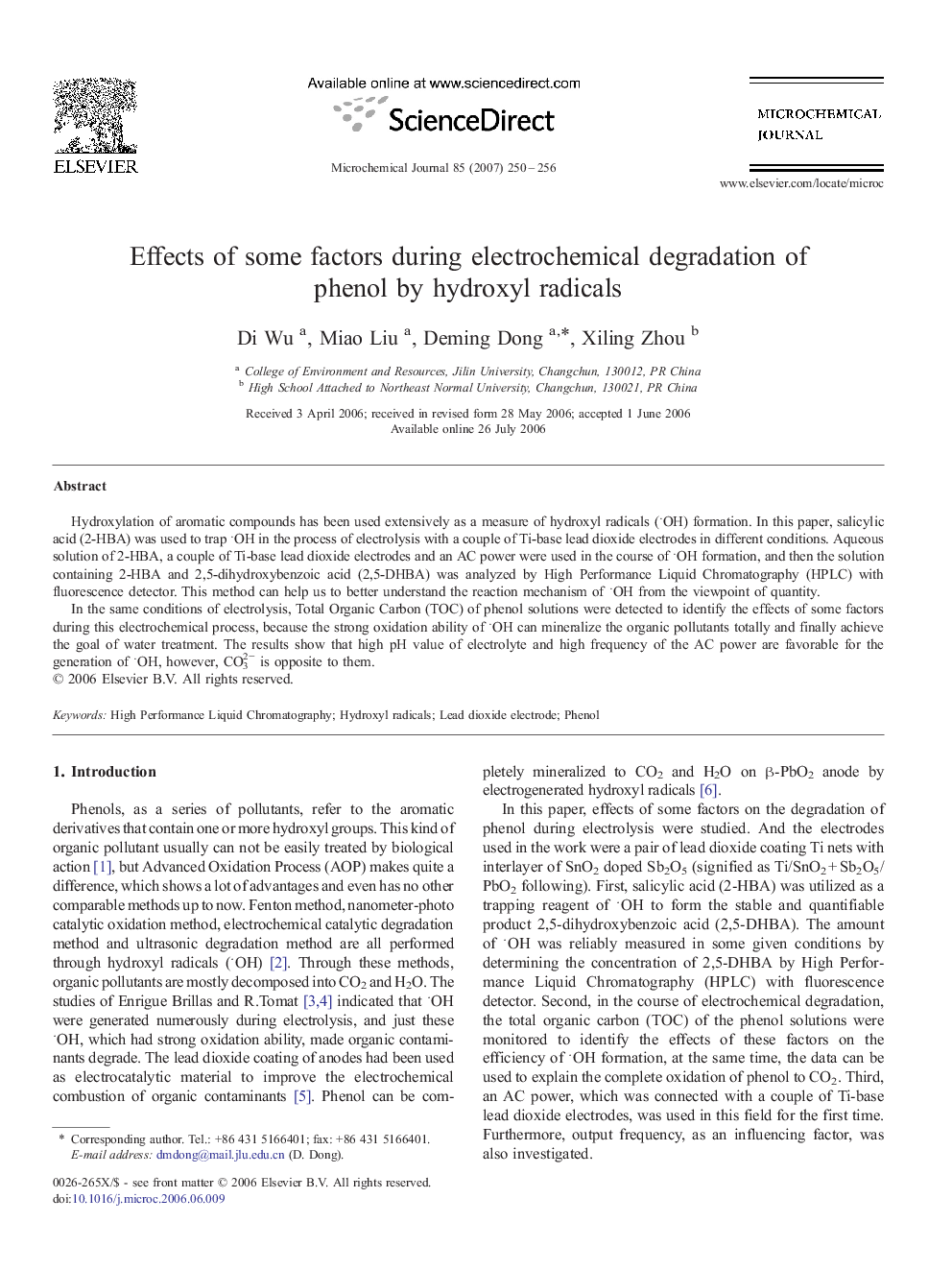| Article ID | Journal | Published Year | Pages | File Type |
|---|---|---|---|---|
| 1228455 | Microchemical Journal | 2007 | 7 Pages |
Hydroxylation of aromatic compounds has been used extensively as a measure of hydroxyl radicals (OH) formation. In this paper, salicylic acid (2-HBA) was used to trap OH in the process of electrolysis with a couple of Ti-base lead dioxide electrodes in different conditions. Aqueous solution of 2-HBA, a couple of Ti-base lead dioxide electrodes and an AC power were used in the course of OH formation, and then the solution containing 2-HBA and 2,5-dihydroxybenzoic acid (2,5-DHBA) was analyzed by High Performance Liquid Chromatography (HPLC) with fluorescence detector. This method can help us to better understand the reaction mechanism of OH from the viewpoint of quantity.In the same conditions of electrolysis, Total Organic Carbon (TOC) of phenol solutions were detected to identify the effects of some factors during this electrochemical process, because the strong oxidation ability of OH can mineralize the organic pollutants totally and finally achieve the goal of water treatment. The results show that high pH value of electrolyte and high frequency of the AC power are favorable for the generation of OH, however, CO32− is opposite to them.
